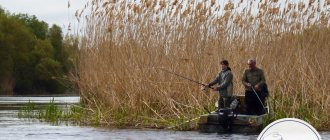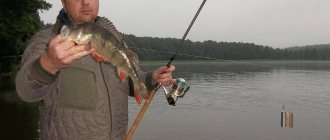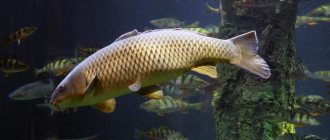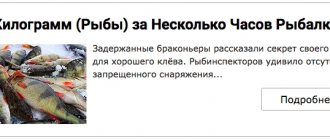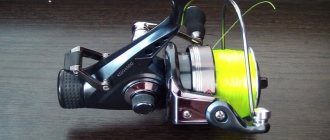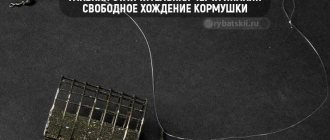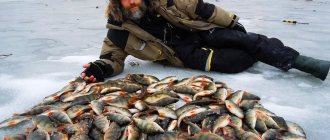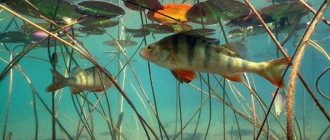For anglers, the second half of spring is the beginning of productive fishing trips. At this time of year, the water is already quite well warmed up, the weather is stable, and the fish are active. In addition, spawning bans are ending in many reservoirs. All this is conducive to fishing.
At the end of spring, the bite of peaceful species becomes stable. The handsome bream is no exception - a coveted trophy for both beginners and experienced fishermen. Avid bream fishermen are looking forward to this moment, because catching bream in May is not complete without catching trophy specimens.
Bream behavior in late spring
This month, the fish begin their migration to spawning grounds. It is preparing to spawn, so there are bans on most rivers. However, no one prohibits fishing in permitted areas with one tackle with one hook. For example, float or feeder.
As a rule, bream spawn in river floods - water meadows with a sufficient amount of vegetation, where there is an opportunity to lay eggs. Spawning, of course, affects fishing, but is not a reason to give up bream fishing. It’s just difficult to predict its outcome during this period. There are days when there are no bites at all, and sometimes the bream bites as if tomorrow it will no longer have such an opportunity. This is typical for the first half of May, and towards the end of the month the spawning ends and the bite becomes stable.
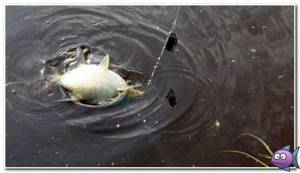
As the water level begins to decline, bream return to their usual way of life. In the morning and evening hours, they visit their favorite shallow water places, abundant in various foods, actively feed and do not ignore fishing baits. This fish also demonstrates good activity in the dark, provided that the night is warm.
In the spring, the target can be capricious, so it is advisable to have several different baits in stock. In addition, the bream is too cautious and regards extraneous sounds as a danger. Hearing them, he instantly leaves the feeding area. Anglers should be aware of this feature, which can be a decisive factor in spring fishing.
May bream fishing and its main features
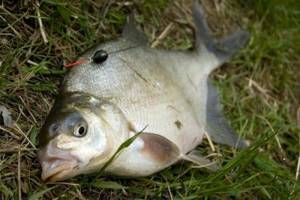
How to catch bream in spring? Usually in spring, the current on almost all rivers increases and the water level drops. Experienced fishermen know that fishing conditions also change during this period. At the end of May you can catch bream almost on the very shore.
Bream is a very cunning and smart fish that stays in groups in deep algae-covered places. Schools of fish, moving forward, ideally clean the bottom of the reservoir, leaving cleared paths behind them. These movements are clearly visible due to the released and floating bubbles of swamp gas.
Bream usually bite in May before the start of spawning. The bite depends on when spawning begins and how active it will be.
This will be influenced by water characteristics such as:
- transparency;
- temperature;
- level.
Bream does not like fast currents or muddy water, so they catch it in early May in stagnant, clear water. It is best to bait bait on large and medium-sized rivers on shell shallows. There he can stand and feed all day.
It is also best to catch bream in May on shallows located away from the coastline. When it is quiet and windless, the bream swims out into shallow water located on the river bed or holes. A good bite is observed during the surf.
Where fishing will take place, everything must be placed in such a way that there is no interference with bait, biting, or hooking. For fishing, fishing rods with floats are used, as well as bottom tackle - a feeder.
Promising places
Where to look for bream in May? Beginners often ask such questions, but experienced foresters know the answer to them. Before spawning, bream gather in schools and feed in bays, estuaries, and outlets from the main channel. That is, in places with a depth of 1 to 3 meters with a slow flow and a large number of various living creatures (bugs, worms, larvae). If the bottom of such an area is hard, there are shells, stones or driftwood on it, this will only add to its prospects.

After spawning, the fish return to their summer camps. Small individuals are less timid, so they come close to the shore in search of food. Large ones stay mainly at the boundaries of feeding zones, usually on dumps in deep holes, into which they retreat at the slightest danger. This must be taken into account when choosing a fishing distance.
What feeder equipment to use
For spring bream feeder fishing, heavy feeder rods with a length of 3.5 meters or more are suitable, providing stable long-distance casting. They are equipped with power spinning reels of 3000–4000 units, preferably with a baitrunner. After all, round-the-clock fishing will be reliable with the presence of safety gear with this functionality, which will save the loss of gear in the event of a sudden bite of a large trophy. The reel is loaded with a braided line of 0.12-0.15 mm, which has low windage and high information content, using feeder installations in the form of an asymmetrical loop or a paternoster familiar to most tying fans.
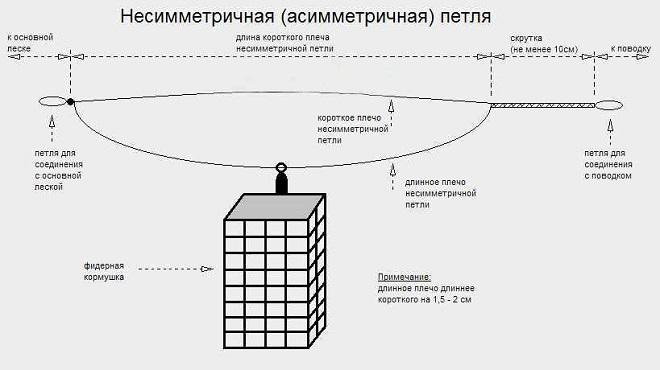
Rectangular mesh metal or plastic feeders are used in installations. The weight of the feeder varies depending on the intensity of the current or its absence from 60 to 120 grams. The mesh cell is selected based on the strength of the water current and the fraction of bait used. The size of the cell should release the complementary food in the form of turbidity, creating a nutrient trail and be washed out at least 10–15 minutes after casting. As a rule, a monofilament leash has a diameter of at least 0.12 mm. Depending on the activity of the fish, its length ranges from 30 to 100 cm.
Important! The more passive the bream, the longer the leash.
It is reasonable to use the technique of installing a monofilament or fluorocarbon shock leader in the rig, which saves a large catch at the final stages of fishing, especially if the coastlines do not allow convenient removal of the trophy. The installation ends with a hook, the type of which is selected according to the type of bait. A hook size of 8–12 numbers is almost always sufficient, even for catching a couple of kilogram trophies.
Fishing in May with a float rod
Float tackle is a fairly effective tool in catching May bream, especially if you equip it with a reel, thereby increasing the casting range. In general, it consists of the following elements:
- a plug or telescopic rod from 5 to 9 meters long with guide rings (the further the fishing point is from the coastline, the longer the rod should be);
- an inertia-free reel with a volume of up to 2000, which will accommodate the necessary supply of monofilament or braided cord;
- main line 0.25 mm (for monofilament) or 0.18 mm (for braided line);
- a float with an olive-shaped body, with a long antenna and keel (for calm water) or a flat model (for strong currents);
- a leash with a cross-section of 0.12-0.16 mm and a length of up to 50 cm (on reservoirs where a spring ban is not established, two leashes of different lengths can be installed);
- loads of several lead pellets distributed along the fishing line depending on the fishing conditions (the load should be such that after casting the tackle, the bite alarm antenna protrudes approximately halfway above the water surface);
- a high-quality hardened hook, the number of which is selected for a specific bait (bream is a strong fish, it will easily bend a hook made of soft wire).
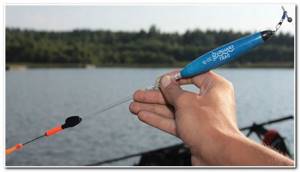
At the height of the flood, catching bream with a fishing rod is quite difficult, but after the river returns to its channel, fishing with such equipment becomes comfortable and promising. Success is guaranteed for those who are lucky enough to find the bream trail. The main thing is to behave quietly on the shore so as not to scare away the wary fish.
Tactics for feeding bream in May
Having chosen your hunting spot, determine the casting points, and begin feeding the likely prey. To do this, take a container, fill it with food and throw it 8-10 times in the desired direction of the water. Try to get into the same circle so that the food concentration is there.
And only then the working reel with the feed mixture is mounted and the bait is put on. After casting, wait for a bite for 10-15 minutes on reservoirs with strong currents. Where it is not available, the time can be increased to 25 minutes. This is enough to wash out the fertilizer; it’s time to fill the container again. As a rule, the bream begin to feed first, and only then the large fish.
When fishing in May on a feeder, a large bream is grabbed sharply and confidently, the hook should be the same. He tries to go as far downstream as possible, turning his body across to use the power of the water to help him. The fisherman must try to stop the prey by moving the rod, gradually pulling it towards the shore.
You should not pull the fish with a reel or let it swallow air, as this will lead to the fact that it will begin to thrash even more and may break loose. You need to take the caught bream into the net, as the catch often jumps off the hook almost on the shore.
Fishing in May on the feeder
The English donka or feeder, as we call it, is excellent for fishing for bream from the very beginning to the end of the warm season. Compared to a float rod, it has several advantages. Firstly, range, thanks to which the bait can be delivered to a promising point remote from the shore. Secondly, when fishing with a feeder, the bait always ends up next to the groundbait. And thirdly, a well-chosen weight of the feeder allows you to fish in currents of any strength.
Typically, a feeder kit for bream fishing consists of:
- a special feeder rod with replaceable quivertips and a test load from 80 to 150 g (recommended length - 3.6 or 3.9 meters);
- an inertia-free reel with a size of 3000-4000, for which a number of requirements are put forward: smooth running, high-quality uniform laying of the line, correct setting of the friction brake;
- the main fishing line (cord), selected for the fishing conditions (for example, for fishing in a powerful river stream, you should not use a fishing line thicker than 0.35 mm, otherwise it will float a lot);
- equipment, including a feeder, leash, hook and fittings.
The best rigs for fishing bream on river currents are considered to be a paternoster, an asymmetrical loop, and a rig with an anti-twist tube. The weight and shape of the feeder must correspond to the chosen fishing location. On reservoirs with standing water or weak currents, you can even use round spring feeders, while square models and feeders with lugs are better suited for currents. The length of the leash varies from 30 cm to 1 meter; the choice depends not only on the conditions, but also on the activity of the fish. Particular attention should be paid to the selection of hooks. In addition to the sharpness of the sting, it must have increased strength. It is not uncommon for a stubborn large bream to unbend or break the hook. It’s especially offensive if this happens at the last stage of the game, when you can already reach the trophy with your hand.
Catching bream on a float
Catching bream with a regular float rod requires great care. The first thing you should always keep in mind is that bream is very shy, and if it notices the slightest signs of danger, it will most likely immediately run away and hide again in the depths. Therefore, you should take care of silence and camouflage, because even the shadow of a person on the water can drive cautious fish far from the shore. You only need to get to the fishing spot on foot, so that the sound of the vehicle’s engine does not scare away the aquatic inhabitants. Conversations and other noise while fishing for bream on a float rod should also be kept to a minimum.
Scheme for loading a float when fishing for bream in windy weather
Bream should be caught on a float in the morning and evening , when the fish moves closer to the shore in search of food. First of all, you need to feed the place with a couple of casts of complementary food prepared for bream, so that a kind of feeding spot is formed in this place of the reservoir, luring hungry fish. Next, you can throw bait and fish, throwing in bait every two hours. Tackle for catching bream on a float rod requires careful preparation, since many conditions must be met for such fishing to be successful:
- You will have to choose a long rod, 6-7 meters , if we are talking about fishing from the shore, and not about using a watercraft.
- Fishing line 0.2-0.28 mm , since a thinner one may not withstand a strong and large specimen when fishing, even if it has already been hooked.
- Strong hooks of 10-14 mm will prevent the pecked fish from being torn off.
- To catch bream, you need a long float weighing 1-2 g , the keel of which is often made from a bird feather.
- Several weights are placed on the line at regular intervals in a row in descending weight, from heaviest to lightest.
Usually, when biting, bream does not pull the float under the water, but, on the contrary, places it on the surface of the water.
Video on catching bream on a float in spring:
Bait for catching bream in early spring
In early spring, from early March to April, voracious hungry fish effectively bite on “fatty” baits of animal origin:
- Bloodworm.
- Maggot.
- Caddisfly.
- Muckworm.
- Crawling out.
Bloodworms are well suited for catching bream in reservoirs rich in these insects. Even without human intervention, fish get used to feeding on them, so a moth that finds itself in the water does not cause any caution in it. But it is important to remember that in addition to bream, almost all other fish feed on bloodworms, so much more often the nimble and small fish will be on the hook.
Maggot is a universal bait option for catching almost any fish. As in the case of bloodworms, in addition to bream, all other sea inhabitants will also peck at maggots, but in this case you can use a trick. If you put several baits on a hook at once, forming a small ball, then such a large object will scare away small fish, but large bream, as well as other fish of decent size, will willingly grab it, which will allow you to weed out the unnecessary bite of small things.
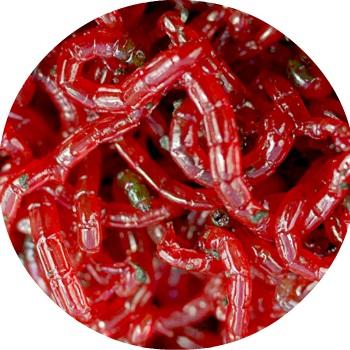
bloodworm maggot
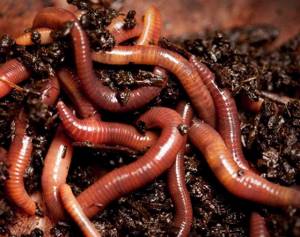
earthworms
Caddis flies and dung worms have approximately the same qualities as maggots. Bream loves them just like other types of fish, so in order to sift out small things, it is better to put such bait on the hook in small bunches.
The crawl is an option for those fishermen whose target is precisely large bream and specimens of other species similar in size, such as carp and carp.
Sometimes in early spring even semolina or dough is used as bait, but it is most effective to combine aromatic bait with bait of animal origin.
Mid-Spring Bait
In April, bream is no longer so voracious, since its belly is already often filled with caviar or milt. However, he will never refuse to eat something small, but high-calorie and nutritious, so the following baits are suitable during this period:
- Bloodworm.
- Maggot.
- Muckworm.
This bait can be placed on a hook either one at a time or in small bunches, depending on what the goal is: to catch a lot of fish, or to catch a trophy specimen.
Bait for fishing in May
Around May, the bream's spawning period ends, which entails some changes in its diet: the bream begins to actively peck not only on bloodworms and maggots, but also on the following baits of plant origin:
- Canned corn.
- Green peas.
- Pearl barley.
- Semolina.
- Dough, bread.
- Pasta.
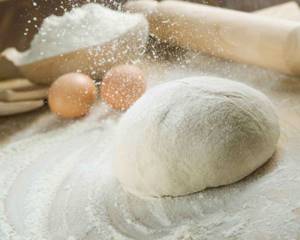
Regular salted unleavened dough
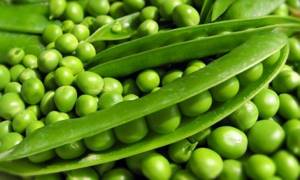
Canned or natural peas
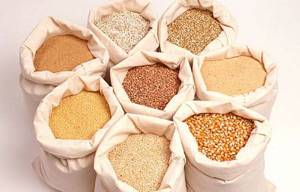
Here the fisherman has a little more space for experimentation. You can try different recipes for preparing dough and cereals from which the bait will be molded, so it is possible to add vanilla and other aromatic additives: cinnamon, chocolate, caramel. Combinations of different baits on one hook also prove effective. Simple recipe:
- Canned corn.
- Vanilla dough.
- Maggot.
Theoretically, this combination will attract fish that like at least one of the ingredients. In practice, everything depends on the specific body of water and the taste preferences of the local fish, so it is always better to experiment with different combinations of bait and choose the most successful one for the given area.
Catching baits
In May, the taste preferences of the fished object are constantly changing. Yesterday he was good at delicious corn, but today he suddenly wanted protein food. For example, a red worm. That is why in the spring, experienced bream fishermen always take several completely different baits for fishing and select the key to the fickle capricious fish experimentally.
What can you offer a river gourmet? The most popular baits include:
- dung worm, earthworm, as well as subleaf;
- large maggot;
- bunch of bloodworms;
- pearl barley;
- corn;
- peas;
- ottoman (dry flavored dough);
- combinations of different attachments (sandwiches).
Bream equally loves both animal and plant foods. If the concept of “seasonal bait” applies to most other species, then with bream it’s not so simple. Not all fishermen can guess his mood.

